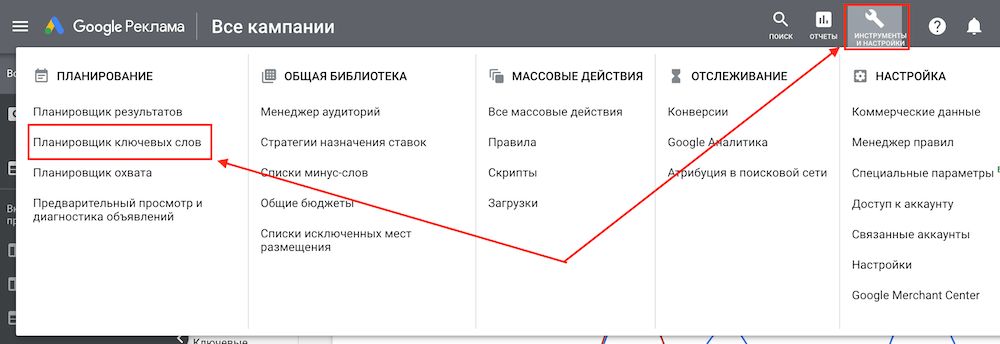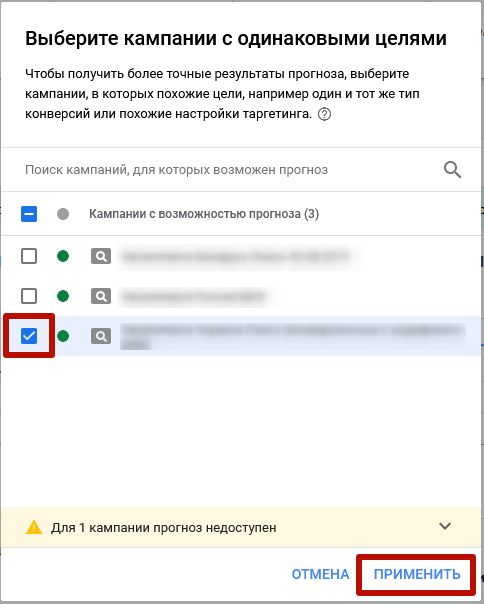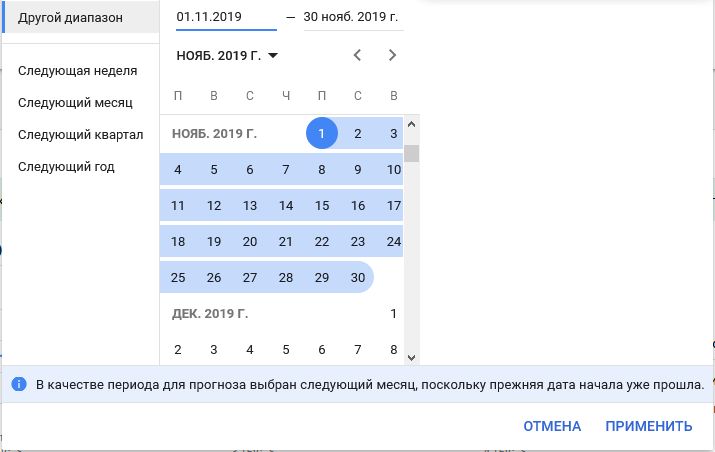Recently, the Google Ads interface has been updated. At the same time, a new service called “Results Planner” was launched in the system. According to the data provided by its creators, many companies using this tool record an increase in the number of requests up to 40%. The numbers are impressive!
In this article, we will talk about the algorithms that the scheduler works with, as well as what benefits it can bring to the advertiser.
What is the Google Ads Results Planner?
Google Ads Performance Planner allows you to quickly assess the growth potential of your ad campaigns. This tool helps to understand how to properly manage the budget – by how much it can be increased when demand increases.
How many calls and sales will I get by ordering contextual advertising from you?
I need to calculate the conversion of my website Describe
the task
in the application
Calculate potential ad revenue Google
contextual advertising calculator
Information! To make the planner’s predictions as close to reality as possible, the system continuously analyzes a huge number of hits to Google search and learns from these data arrays.
The service is able to simulate ad auctions and take into account all kinds of parameters: seasonality, competitor activity, landing page quality. As a result, the planner generates a forecast for all types of conversions that were added to the corresponding field in the ad performance report.
Under what conditions do Performance Planner work?
The service is not available for all types of campaigns and is not compatible with any strategy. You can use Performance Planner if the following conditions are met:
- the campaign is active for at least three days;
- Ads have been clicked at least three times in the past 7 days
- there is at least one conversion in the same period;
- advertising campaign launched in Google search;
- The strategy selected is “Manual CPC” or “Optimized CPC and Target CPA”.
Obviously, almost any advertiser can meet such simple requirements.
What is the Google Performance Planner for?
The main task of the new tool from Google is to generate predictive values for the effectiveness of displaying ads in the system. Moreover, the creators of the service left the choice of efficiency criteria to the advertiser. It can be both the conversions themselves and their value. You can also select ad clicks. It is also up to you to determine the direction of optimization – by average cost, volume or budget expenditure.
Advice! Use the Performance Planner regularly. Google recommends doing this at least once a month. This frequency makes it possible to adjust campaigns in accordance with seasonal traffic fluctuations, the development of the bidding situation and changes in the level of competition.
Define all the required indicators and set the boundaries of the period for which the forecast is made. This could be, for example, next month or week. The efficiency planner will display the result as a blue line. These are the expected values of the indicator. The current strategy is displayed in gray.
By clicking on different points of the graph, you can estimate how many clicks or conversions, at what cost and within what budget you will receive. So you can choose the best plan of action for yourself for the future.
Google Ads Performance Planner Features
Among the results’ planner features:
- An estimate of the amount of budget needed to achieve the required level of conversions, their value or clicks.
- Effectively allocate funds between campaigns to maximize conversions.
- More fine-tuning of campaigns, including adding keywords, as well as monitoring changes in metric values.
How to forecast performance?
You can predict the efficiency both for one month and for the whole quarter. Making a plan in itself does not affect the settings in your Google AdWords account.
To predict the result, follow these steps:
In your Google Ads account, go to the Results Planner. You can find the corresponding link in tools and settings:

How many calls and sales will I get by ordering contextual advertising from you?
I need to calculate the conversion of my website Describe
the task
in the application
Calculate potential ad revenue Google
contextual advertising calculator
Use the “+” button to add a forecast:

Important! Below is a message stating that the tool does not improve results by itself. The responsibility for the decisions made lies entirely with the advertiser.
The module at the top of the screen allows you to customize the scheduler:

Add the necessary campaigns to the plan. The system works more correctly and more efficiently if they have identical goals, for example, increasing profitability. In this case, the algorithm accurately determines that it is more efficient to direct funds to those ads whose predicted profitability is higher:

Set the time period for which you want to create a plan:

Select the key criteria you want to optimize (clicks, conversions, or value). Optionally, the goal is specified (conversion, its cost, expenses), the algorithm uses it when distributing the budget:

Then click “Continue” to go to the general forecast data page.
Disadvantages of using results planner
No automated system is able to take into account all the external factors that impact the effectiveness of advertising. In the help section of Google AdWords, you can find examples where huge amounts are reallocated to many campaigns. In fact, not every business operates with such financial resources.
Performance Planner in Google Ads is based on the principles of machine learning. But in order to get an adequate result from the functioning of such systems, an impressive array of statistical information is required, which is quite difficult to collect in real life.
The reference section also provides examples of parameters for generating a simplified forecast. Its reliability will most likely be quite low, and this will lead to many questions.
Performance Planner Tips
- Use the attribution conversion option instead of last click conversions. This will increase the number of conversions. Indeed, when creating a plan, the system takes into account the types of conversions specified in the “Inclusion in the Conversions column” block.
- Generate separate forecasts for campaigns with different marketing goals. This will allow for the most efficient distribution of funds. It is advisable to group only those campaigns that have a common budget or identical goals.
- Be mindful of performance goals. The dynamism of the auction, as well as the influence of external factors, may cause discrepancies in the forecasts. Therefore, it is necessary to constantly monitor the effectiveness of the campaign and optimize it. You can simplify your work by setting performance goals. An additional plus is the ability to quickly receive notifications when the campaign suddenly deviates from the goals.
- Track changes in forecasts. The closer the start date of the analyzed period, the more accurate the plan. We recommend re-checking the forecast before using it.

















